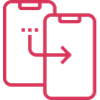-

How Much it ll cost to build an app like
- Cost to develop an Uber Tow Truck App
- Cost to develop a Pest Control App
- Cost To Develop a Handyman App Like Uber
- Cost To Develop a Doctor Appointment Booking App
- Cost To Develop An App Like MoodBites
- Cost To Develop An App Like SkipTheDishes
- Cost To Develop An App Like Q Chat
- Cost To Develop An App Like TickTick
- Cost To Develop An App Like ContractBook
- Cost To Develop An App Like Utter
-

How Much it ll cost to build an app like
- Cost to develop a Video Editing Mobile App like Magisto
- Cost to develop a Live Video Streaming App like Twitch
- Cost to develop an app like Home Workout- No equipment
- Cost to develop a Sports News app like theScore
- Cost to develop an Application like Reddit
- Cost to develop a Sports News app like theScore
- Cost to develop an E-learning platform like Udemy
- Cost to develop an On Demand Doctor App like Heal App

The Future of Learning: How Education Virtual Reality is Changing Classrooms
Education remains one of the foundational pillars of our society. As technology evolves, so too does our ability to deliver better, more engaging learning experiences. Among the most exciting advancements in this space is education virtual reality (VR), an immersive technology that’s revolutionizing how students learn, engage, and retain information.
Whether you’re in Toronto, Montreal, Calgary, Ottawa, or elsewhere in Canada, education virtual reality is making its way into classrooms, training facilities, and corporate learning environments. The global VR education market was valued at over $200 million in 2020 and is projected to reach $700 million later this year (2025), highlighting the growing demand for virtual reality and immersive learning experiences.
Here is a deep-dive into where education virtual reality is at today and where it’s headed in the future.
What Is Education Virtual Reality?
Education virtual reality refers to the use of immersive technology that allows students to experience interactive 3D environments for learning.
Instead of reading from textbooks or watching videos, learners can step inside virtual worlds. This means exploring ancient civilizations, conducting science experiments, or practicing public speaking in a simulated environment.
As an education virtual reality app development company, our team can confirm that this shift is more than just technological. It’s reshaping how we teach and how learners engage with content. VR gives students the opportunity to see, do, and interact with concepts in ways that are impossible in traditional classrooms.
In 2025, according to a study by Hanover Research, this has meant an estimated 14% of all educational institutions in North America making sizeable investments in virtual reality and immersive learning.
How Does VR Create Skilled and Confident Learners?
In cities like Toronto and Calgary, educational institutions are beginning to implement VR tools that simulate real-world experiences.
This “learn-by-doing” approach makes education more practical and less abstract. Students can manipulate objects, explore scenarios, and gain hands-on skills in a low-risk, controlled environment.
This type of immersive learning encourages students to actively participate rather than passively absorb information. As an experienced education virtual reality app developer, has helped design immersive tools that let learners “see and do” rather than just read and memorize.
With VR, learners become explorers, making education more memorable and meaningful.
Can VR Encourage More Active Learning?
Yes, VR naturally promotes active learning. Research shows that people retain information better when they hear, see, and do simultaneously. By allowing students to interact with virtual environments, education virtual reality fosters deeper understanding and encourages curiosity.
For example, in Montreal and Ottawa, forward-thinking schools are using VR to simulate complex scientific processes, allowing students to virtually explore the human body, chemical reactions, or even outer space, sparking excitement and engagement across all age groups.
Does VR Improve Retention and Comprehension?

VR has been shown to significantly improve information retention. The use of 3D models and interactive simulations helps students visualize and internalize information more effectively than static images or text alone.
In cities like Edmonton, VR is being tested in both academic and corporate training settings to help learners retain technical concepts, safety procedures, and soft skills through realistic simulations and role-playing experiences.
How Does VR Provide Hands-On Learning Across Subjects?
Whether it’s exploring historical events in Toronto, navigating world geography in Calgary, or analyzing literature in Montreal, VR allows students to feel the subject matter. Instead of simply reading about the Great Wall of China, learners can virtually walk along it. Instead of imagining a volcanic eruption, they can witness it unfold in 360 degrees.
This multi-sensory approach provides richer, more immersive experiences that deepen understanding and inspire lifelong learning.
Can Virtual Reality Help Visually Impaired Students?

Absolutely. One of the most powerful applications of education virtual reality is its ability to make learning more inclusive. VR apps designed for visually impaired learners can translate complex information into accessible formats using sound, touch, and spatial cues.
In places like Ottawa and Edmonton, developers are creating VR tools that help visually impaired students understand charts, graphs, and even architectural layouts, opening doors to opportunities that were once limited by accessibility challenges.
How Can VR Help Eliminate Language Barriers in Education?
For students moving between cities like Montreal and Toronto, or preparing to study abroad, language can be a significant barrier. VR helps break down these barriers by offering immersive language-learning environments.
Through real-time translations, visual cues, and contextual immersion, students can practice and master new languages more naturally. This not only improves comprehension but also builds confidence in multilingual, multicultural classrooms.
Will VR Replace Traditional Classrooms?
While education virtual reality is not likely to completely replace face-to-face instruction, it will continue to enhance how we teach and learn. As more schools in Toronto, Calgary, and beyond adopt this technology, educators will be able to deliver lessons that are more personalized, engaging, and effective.
By combining the best of digital innovation with proven teaching methods, VR is shaping the next generation of learners.
Education Virtual Reality Use Cases Seen By Age Group
1. VR for Early Learners (Ages 4-7)
Building Foundational Skills Through Immersive Play
In preschool and kindergarten, learning is driven by curiosity and hands-on experiences. Virtual reality enables young children to explore 360-degree environments that support sensory development, spatial awareness, and creative discovery, enhancing traditional learning through safe, guided digital exploration.
2. VR in Elementary Education (Ages 7-11)
Bringing the Curriculum to Life
Students in primary school thrive on exploration and imagination. With VR, they can visit ancient civilizations, dive beneath the ocean, or examine the inner workings of the human body, all without leaving the classroom. These VR and AR experiences make subjects like science, history, and geography unforgettable.
3. VR in Middle School (Ages 11-14)
Deepening Understanding and Emotional Intelligence
As students enter middle school, VR offers new ways to build critical thinking and empathy. Immersive simulations allow learners to explore different perspectives, strengthen subject knowledge, and visualize abstract concepts, making learning more effective than traditional textbooks alone.
4. VR for High School Students (Ages 14-16)
Boosting Engagement and Unlocking Creative Potential
A recent study published by the University of Kansas showed that students produce higher engagement with virtual reality and augmented reality compared to video lessons. Keeping teenagers engaged and motivated is essential for academic success.
Education virtual reality introduces virtual field trips, advanced science modules, and opportunities for students to create their own immersive content, fostering a more personalized and interactive learning experience.
5. VR in Higher Education (Ages 16-18+)
Preparing Students for Real-World Innovation
Colleges and universities are embracing VR as a critical tool for advanced learning. From virtual labs to simulated business environments, immersive technology is helping students bridge theory and practice. VR supports higher education institutions in creating cutting-edge programs that inspire innovation and industry readiness.
6. VR for Vocational Training
Realistic, Hands-On Learning Without the Risk
Vocational students gain practical experience through 360-degree simulations of real-world scenarios, whether it’s operating machinery, troubleshooting automotive systems, or performing technical procedures. With VR, learners can explore and practice job skills in a controlled, immersive environment.
7. VR for Students with Special Needs
Creating Personalized, Inclusive Learning Environments
Virtual reality opens up new possibilities for students with special educational needs and disabilities. Teachers can design customized experiences that support sensory regulation, accessibility, and personalized instruction, all while promoting engagement, confidence, and independence.
Real-World Examples of Education Virtual Reality in Use
1. Creative Healing in Virtual Worlds at Loyola Marymount University
Students in LMU’s art therapy program explore calming virtual settings, like firelit campsites or desert oases, designed to inspire therapeutic creativity. These VR experiences help future therapists learn how to design emotionally supportive environments for clients. The technology also supports coursework in psychological testing and artistic expression, thanks to a university grant and tech partnership.
2. Exploring Campus Through UMVerse at the University of Miami
The University of Miami welcomes new students with a virtual tour of its Coral Gables campus using the custom-built UMVerse XR experience. Students can interact with virtual classes, museum exhibits, and athletic facilities while completing seminar assignments. This immersive orientation builds tech confidence and encourages in-person campus engagement.
3. Immersive Courtroom Experiences at Austin Peay State University
Austin Peay’s Department of Criminal Justice is transforming legal education by using Meta Quest 3 VR headsets to conduct virtual mock trials. Students gain a 360-degree view of courtrooms and crime scenes, simulating real-world scenarios to sharpen their legal reasoning. Future applications include virtual police ride-alongs and body cam analysis, helping bridge classroom theory with practical training.
4. Alien Labs and Equity in Biology at Arizona State University
ASU’s Dreamscape Learn platform places biology students in imaginative VR scenarios, such as alien ecosystems, to test their scientific thinking. The interactive 15-minute labs are designed to ensure equitable learning by engaging students beyond textbooks and tests. Early results show higher academic performance and retention among VR lab participants.
5. Pharmacy Training at the University of Pittsburgh
Pitt’s pharmacy students are trading traditional lectures for VR simulations that allow them to explore digital models of the human heart. With help from campus tech teams, they can visualize cardiovascular anatomy and medication effects in real time. Plans are underway to expand this approach to emergency medicine and clinical training.
6. Building Public Speaking Confidence at Indiana University Indianapolis
At IU Indianapolis, students can overcome the fear of public speaking using VirtualSpeech software and Meta Quest II VR headsets. Inside the Speaker’s Lab or through a library checkout, they rehearse speeches in simulated environments like conference rooms or TED Talks, receiving real-time feedback. The initiative currently supports general education courses, with plans to expand access.
7. Supply Chain in 360 Degrees at West Virginia University
WVU’s Wehrle Global Supply Chain Lab offers students hands-on VR experiences in logistics, from visiting shipping piers to walking through warehouses. These simulations help learners understand the complexity of global supply chains in a dynamic way. The lab also serves as a hub for mentorship, workshops, and industry networking with supply chain professionals.
Hire An Education Virtual Reality App Developer at Lets Nurture
At Let’s Nurture, we specialize in building customized virtual reality mobile apps and tech solutions tailored to your educational or training needs. Whether you’re an educator, startup, or enterprise based in Toronto, Montreal, Calgary, Ottawa, or Edmonton, we can help you develop immersive experiences that drive better learning outcomes.
Ready to take the next step? Request a quote or contact us at info@letsnurture.ca. Let’s build the future of education — together.

Author
Our Partners




WhatsApp us


